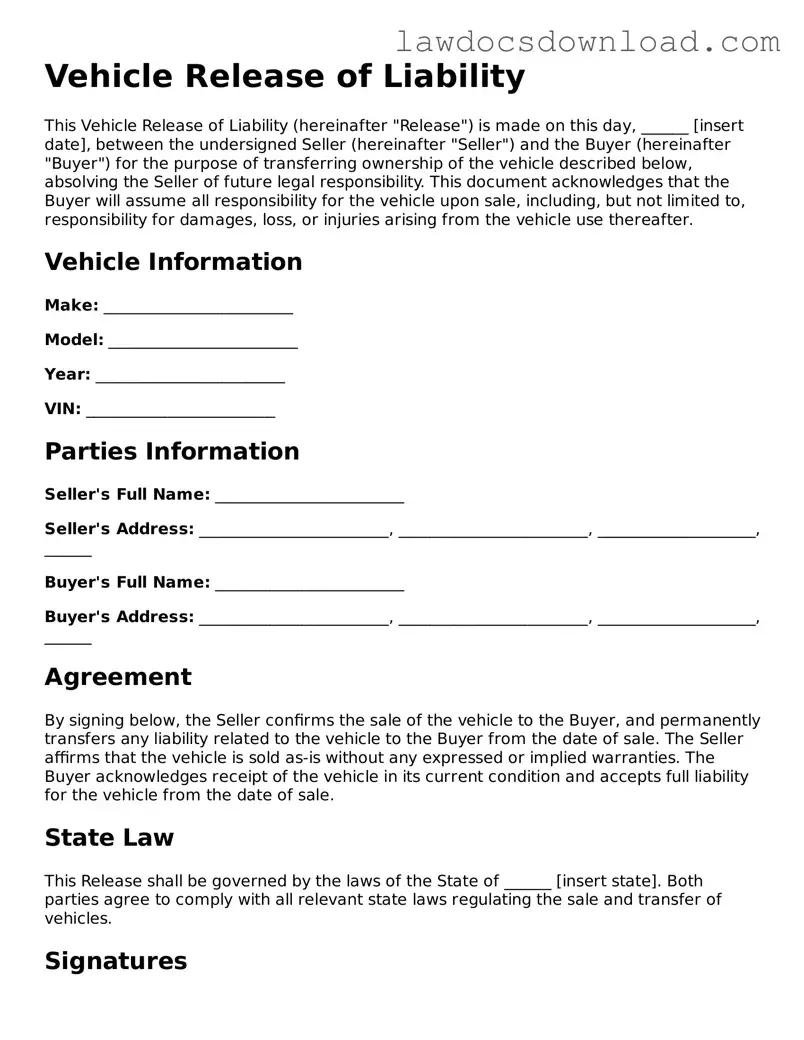Vehicle Release of Liability
This Vehicle Release of Liability (hereinafter "Release") is made on this day, ______ [insert date], between the undersigned Seller (hereinafter "Seller") and the Buyer (hereinafter "Buyer") for the purpose of transferring ownership of the vehicle described below, absolving the Seller of future legal responsibility. This document acknowledges that the Buyer will assume all responsibility for the vehicle upon sale, including, but not limited to, responsibility for damages, loss, or injuries arising from the vehicle use thereafter.
Vehicle Information
Make: ________________________
Model: ________________________
Year: ________________________
VIN: ________________________
Parties Information
Seller's Full Name: ________________________
Seller's Address: ________________________, ________________________, ____________________, ______
Buyer's Full Name: ________________________
Buyer's Address: ________________________, ________________________, ____________________, ______
Agreement
By signing below, the Seller confirms the sale of the vehicle to the Buyer, and permanently transfers any liability related to the vehicle to the Buyer from the date of sale. The Seller affirms that the vehicle is sold as-is without any expressed or implied warranties. The Buyer acknowledges receipt of the vehicle in its current condition and accepts full liability for the vehicle from the date of sale.
State Law
This Release shall be governed by the laws of the State of ______ [insert state]. Both parties agree to comply with all relevant state laws regulating the sale and transfer of vehicles.
Signatures
Seller's Signature: ________________________Date: ______
Buyer's Signature: ________________________Date: ______
Acknowledgment
This document serves as acknowledgement of the transfer of ownership and release of liability from the Seller to the Buyer. It is recommended that both parties retain a copy of this Release for their records.
